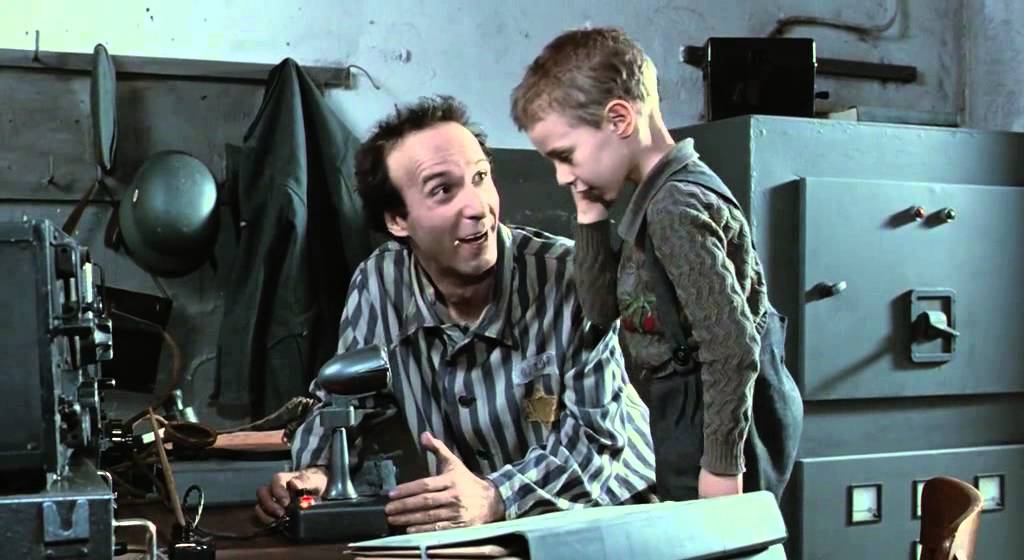“Don’t You Know Anything?”: An essay by Adrienne Kertzer in Jenny Adams Bloomsbury Companion to Holocaust Literature (2014)
 To my surprise, I couldn’t find any information about Holocaust Literature neither in the Oxford Companion to Children’s Literature nor in the Cambridge Companion to Children’s Literature. Instead, I found what I was looking for in the Bloomsbury Companion to Holocaust Literature. Published in 2014 and edited by Jenny Adams, the book deals with the representations of Holocaust. The Companion comes with a collection of eleven essays, a glossary of major terms and concepts, and an annotated bibliography. Each essay discusses Holocaust literature from a different angle – covering diverse topics such as its language, memory, truth and fiction and theory and ethics – all written by academics, mostly literature scholars in the United Kingdom and the USA, as the ’notes on contributors‘ inform.
To my surprise, I couldn’t find any information about Holocaust Literature neither in the Oxford Companion to Children’s Literature nor in the Cambridge Companion to Children’s Literature. Instead, I found what I was looking for in the Bloomsbury Companion to Holocaust Literature. Published in 2014 and edited by Jenny Adams, the book deals with the representations of Holocaust. The Companion comes with a collection of eleven essays, a glossary of major terms and concepts, and an annotated bibliography. Each essay discusses Holocaust literature from a different angle – covering diverse topics such as its language, memory, truth and fiction and theory and ethics – all written by academics, mostly literature scholars in the United Kingdom and the USA, as the ’notes on contributors‘ inform.
One of the essays in this collection, namely “‘Don’t You Know Anything?’: Childhood and the Holocaust,” deals primarily with children’s literature. Adrienne Kertzer, the author, is an English Literature professor at the University of Calgary. She is a leading expert in Holocaust fiction for children and is specialized in the representation of historical trauma in fiction for young adults. Kertzer’s 2002 book My Mother’s Voice is cited frequently by academics working in the field of Holocaust studies.
Although it is a rather long essay (17 pages), it is well-structured. This feature makes it possible for readers to get familiar with a variety of specializations in the subject. Kertzer has structured her essay in four sections: In the first section she compares the function of child witnesses in Holocaust fiction for children and adults. In the second section, she discusses the differences of fairy tales and history within a pedagogical framework. In the third section, she analyses crossover literature. In her last section, Kertzer investigates what a child witness can be expected to know in Holocaust literature that is directed at different age groups. Kertzer uses Monique Polak’s 2008 novel What World is Left and the same novels Gilbert uses in her article – namely Boyne’s The Boy in the Striped Pyjamas (2006) and Gleitzman’s Once (2010).

In contrast to Gilbert’s, Kertzer provides the reader with a short overview of different areas within Holocaust fiction for children, as well as crossover fiction. Hence, particular sections are not as detailed as Gilbert’s analysis that focusses only on narrative techniques in Holocaust fiction. This is in accordance with the idea of a companion that should provide background information and opening-up ideas. Nevertheless, Kertzer’s arguments are conclusive and supported by a range of examples from Holocaust novels – which makes it very illustrating – and by constantly citing previous discussions in the field. The article in the Companion serves as a good starting point especially for academics and Literature-students who are new to the topic, but possess basic knowledge of literary studies. It provides them with orientation in the ‚Holocaust in children’s literature‘ field and helps to choose journals with a narrower focus for specialisation.
The Companion offers extensive and high-quality resources from leading experts on different areas and perspectives within literature addressing the Holocaust. It is appealing to academics, students and researchers. As expected from scholarly works, the book contains a comprehensive annotated bibliography with a range of references and a short description about most of them – which is arranged according to the different essays. This invites its readers to dig further into the topic. Furthermore, it gives an overview on new directions in Holocaust literary studies in its last chapter. Additionally, there’s a very helpful glossary where unfamiliar terms and concepts can be looked up. The book, therefore, could be also helpful for people who are generally interested in the topic.
bibliography:
Kertzer, A. (2014). ‚Don’t You Know Anything?‘: Childhood and the Holocaust. In J. Adam (Ed.), The Bloomsbury Companion to Holocaust Literature (pp. 121-138). London: Bloomsbury.
images:

